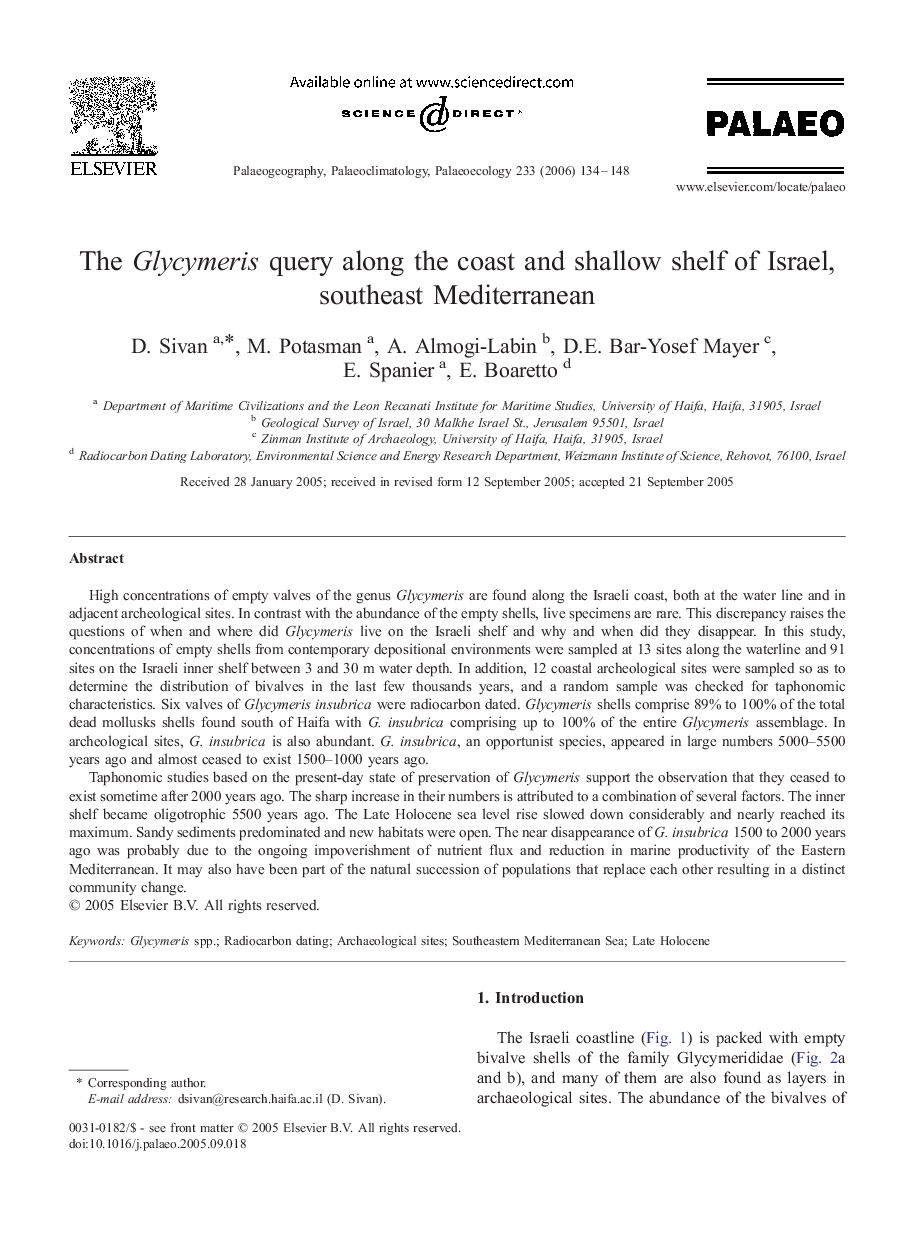| کد مقاله | کد نشریه | سال انتشار | مقاله انگلیسی | نسخه تمام متن |
|---|---|---|---|---|
| 4469489 | 1622376 | 2006 | 15 صفحه PDF | دانلود رایگان |

High concentrations of empty valves of the genus Glycymeris are found along the Israeli coast, both at the water line and in adjacent archeological sites. In contrast with the abundance of the empty shells, live specimens are rare. This discrepancy raises the questions of when and where did Glycymeris live on the Israeli shelf and why and when did they disappear. In this study, concentrations of empty shells from contemporary depositional environments were sampled at 13 sites along the waterline and 91 sites on the Israeli inner shelf between 3 and 30 m water depth. In addition, 12 coastal archeological sites were sampled so as to determine the distribution of bivalves in the last few thousands years, and a random sample was checked for taphonomic characteristics. Six valves of Glycymeris insubrica were radiocarbon dated. Glycymeris shells comprise 89% to 100% of the total dead mollusks shells found south of Haifa with G. insubrica comprising up to 100% of the entire Glycymeris assemblage. In archeological sites, G. insubrica is also abundant. G. insubrica, an opportunist species, appeared in large numbers 5000–5500 years ago and almost ceased to exist 1500–1000 years ago.Taphonomic studies based on the present-day state of preservation of Glycymeris support the observation that they ceased to exist sometime after 2000 years ago. The sharp increase in their numbers is attributed to a combination of several factors. The inner shelf became oligotrophic 5500 years ago. The Late Holocene sea level rise slowed down considerably and nearly reached its maximum. Sandy sediments predominated and new habitats were open. The near disappearance of G. insubrica 1500 to 2000 years ago was probably due to the ongoing impoverishment of nutrient flux and reduction in marine productivity of the Eastern Mediterranean. It may also have been part of the natural succession of populations that replace each other resulting in a distinct community change.
Journal: Palaeogeography, Palaeoclimatology, Palaeoecology - Volume 233, Issues 1–2, 4 April 2006, Pages 134–148